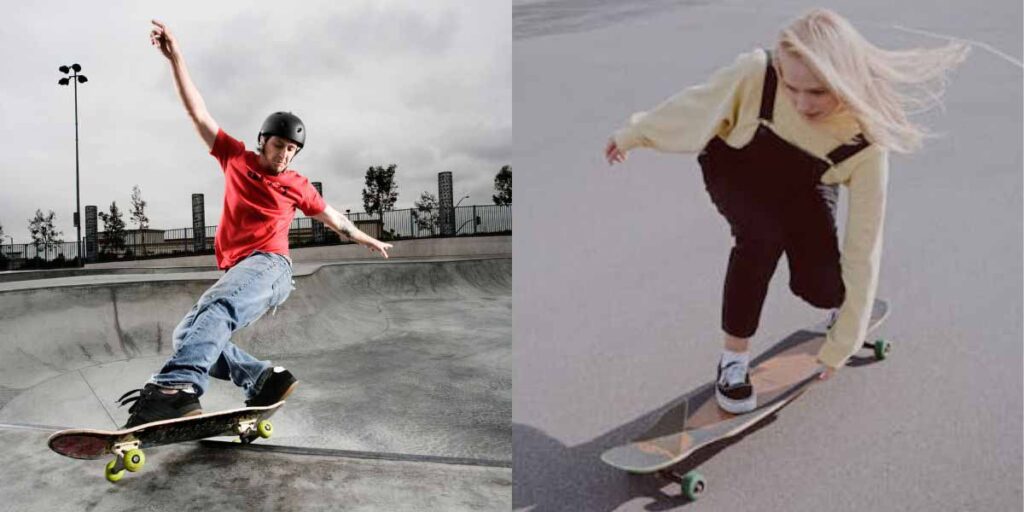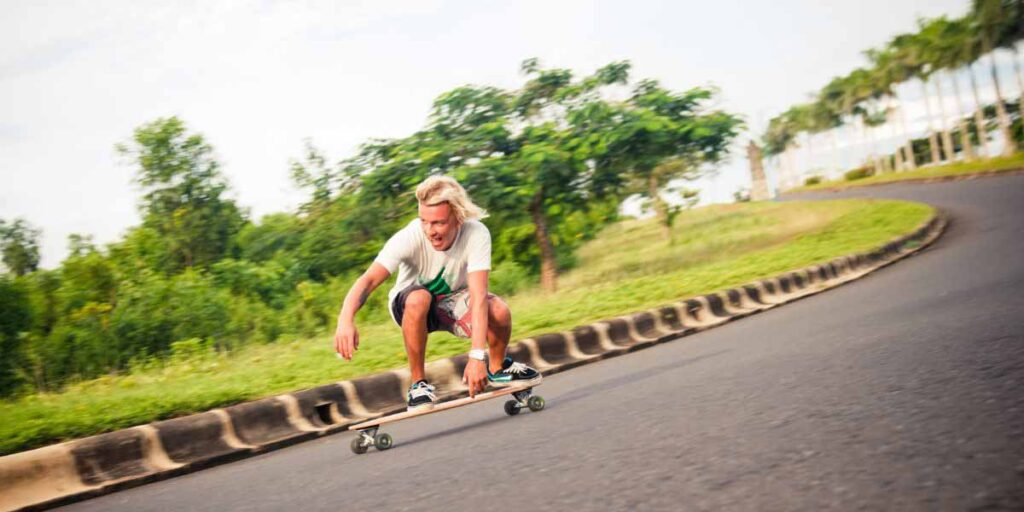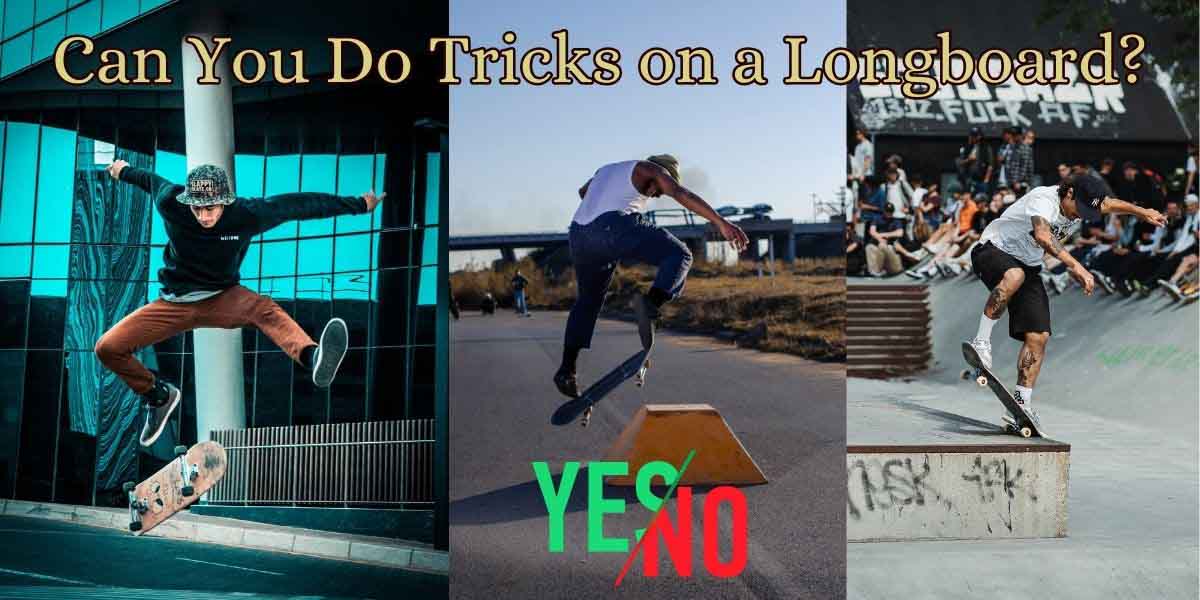Yes, you can absolutely do tricks on a longboard! While longboards are often associated with cruising and downhill riding, they are far more versatile than most people think. Longboarding tricks range from simple balance-based maneuvers to advanced aerial stunts. Whether you’re just starting out or looking to master advanced techniques, there’s a trick for every rider. Let’s get started!
Why Longboards are Great for Tricks?
Longboards are usually larger and more stable than skateboards. Unlike their shorter counterparts, longboards provide a forgiving platform for learning tricks due to their extended wheelbase and flexible deck design. This stability makes them perfect for freestyle, downhill, and even flatland tricks.
One common misconception is that longboards are solely for cruising or downhill riding. However, many modern longboards come with features specifically designed for tricks, like kicktails, concave decks, and stiff construction, allowing you to pop, flip, and slide with confidence.
What Tricks Can You Do on a Longboard?

Longboard tricks vary in complexity, from simple moves perfect for beginners to more advanced, technical stunts. Let’s explore some of the best tricks you can do on a longboard:
Basic Tricks for Beginners
Shuvit
The shuvit is one of the simplest tricks for beginners. The goal is to spin the board 180 degrees while your body remains in the same position. You don’t need to pop the board off the ground, making it a more accessible trick. Start by positioning your back foot near the tail and your front foot near the center of the board. Use your back foot to “scoop” the board around, and with practice, you’ll land it consistently.
Cross-Step
The cross-step is more of a longboarding dance move than a trick, but it looks stylish and helps develop balance. As you carve down a hill or ride on flat terrain, cross one foot over the other in a smooth, controlled motion. This trick is perfect for cruising and helps improve your flow on the board.
Manual
A manual involves balancing on the back wheels of your longboard while the front wheels lift off the ground. It’s similar to a skateboard “wheelie,” but it requires more balance due to the length and weight of the longboard. To perform a manual, shift your weight onto your back foot and slightly lift the front wheels. The key to this trick is balance—keep practicing until you can hold the manual for longer distances.
Freestyle Tricks for Beginners
Freestyle tricks often involve more movement and flair, combining dance elements with board manipulation. They are typically more advanced than flatland tricks but are still accessible to beginners who are willing to practice.
No-Comply
A classic freestyle trick that requires you to pop the board with one foot while using the other to push off the ground. Begin by stepping off the board with your front foot and then pushing down on the tail to pop the board into the air. This trick combines speed and timing, so start slow and work your way up.
Tiger Claw
The Tiger Claw involves grabbing the board mid-air and spinning it with your hand before landing back on it. It’s a showy, stylish trick but surprisingly accessible to beginners with practice. Make sure to get the timing right: after jumping off, grab the board and flick it back under you before landing.
Advanced Tricks
Once you’ve mastered the basics, it’s time to move onto more challenging tricks. These require a deeper understanding of balance, control, and board manipulation.
180 Slide
Sliding is essential for downhill longboarding, but it’s also a great way to add flair to your tricks. To do a 180 slide, approach with speed and carve into a turn, using your back foot to push the tail out, making the board rotate 180 degrees. While this trick is typically easier on a downhill slope, you can practice it on flat ground to build confidence.
Flip Tricks
Advanced riders can attempt kickflips and heelflips, similar to those on a skateboard. These tricks involve using your foot to flip the board while airborne, a challenging move that requires precision and timing. Start with smaller, less complicated flips to build up your confidence before attempting full kickflips.
5 Easy Longboard Tricks for Beginners

Let’s break down five tricks that are ideal for longboard beginners. These will help you build a foundation of skills while having fun on your board.
- Shuvit: A flatland trick where the board rotates 180 degrees under you.
- Cross-Step: A stylish footwork trick perfect for carving and cruising.
- Manual: Balance on your back wheels while cruising.
- No-Comply: Pop the board with one foot while stepping off.
- Tiger Claw: Grab and flick the board under you before landing.
Each of these tricks is designed to help you progress in longboarding while building your confidence and style.
How to Progress from Beginner to Advanced Tricks
Mastering longboard tricks is all about progression. Start small and work your way up. Here’s a suggested learning path to help you go from beginner to advanced:
- Begin with Flatland Basics: Start with shuvits and cross-steps to develop your balance and board control. These tricks are low-risk but offer essential skill development.
- Add Movement with Freestyle Tricks: Once you’re comfortable on your board, move on to freestyle tricks like the no-comply or tiger claw. These tricks introduce dynamic movement, making your tricks more fluid and stylish.
- Incorporate Slides and Spins: Slides, such as the 180 slide, not only look great but are crucial for downhill riding. As you gain confidence, experiment with spins and flips to take your longboarding skills to the next level.
How to Get Started: Essential Gear and Setup
Before you start learning tricks, it’s crucial to have the right gear. The right setup can make a world of difference in how easily you pick up new moves.
Choosing the Right Longboard
The first step is selecting a longboard that suits your trick goals and budgets. A drop-through longboard is often recommended for beginners because it’s closer to the ground, providing more stability. If you’re looking to perform more technical tricks, a top-mount longboard might be better because it offers more leverage and control.
Wheels and trucks are also vital. Softer wheels (around 78A-83A) are better for tricks as they offer more grip and absorb impact better. For trucks, slightly looser setups are preferable for most tricks because they allow for better maneuverability.
Safety Gear
Safety should always come first. No matter how simple a trick may seem, always wear a helmet. Knee and elbow pads are also essential, especially when trying out new tricks. Wrist guards can save you from nasty falls, and for more aggressive tricks, padded shorts can be a lifesaver.
Can You Do an Ollie on a Longboard?
Yes, it is possible to ollie on a longboard, but it’s much harder than on a traditional skateboard due to the size and weight of the board. The trick involves popping the tail and jumping up, but because longboards are longer and heavier, the timing and force required are more challenging. For beginners, mastering a boneless (where you grab the board and jump) can be an excellent alternative before attempting an ollie. Before attempting an ollie, it’s important to learn about the perfect longboard size.
Safety Tips for Learning Longboard Tricks
When learning new tricks, safety should be a top priority. Here are some tips to keep in mind:
- Wear Protective Gear: Helmets, wrist guards, knee and elbow pads are essential, especially when practicing slides or flips.
- Find a Safe Space: Flat, open spaces are ideal for practicing tricks without obstacles or traffic.
- Start Slow: Don’t rush into advanced tricks. Build up your skillset gradually to avoid injury.
FAQs
What’s the Difference Between Longboard and Skateboard Tricks?
Longboard tricks tend to focus more on fluid movements and balance, while skateboard tricks often involve flips and jumps.
How Long Does It Take to Learn Longboard Tricks?
It depends on the trick and your dedication. Simple tricks can be learned in a few days, while advanced ones may take weeks or months.
Are Longboard Tricks Harder Than Skateboard Tricks?
Some tricks are easier on a longboard due to its stability, while others are more challenging because of the board’s size and weight.
Conclusion
Longboard tricks are a great way to challenge yourself and make your riding experience more exciting. From simple shuvits and cross-steps to advanced slides and flips, there’s always a new trick to learn. As long as you take the time to practice, stay safe, and build up your skills gradually, you’ll be mastering longboard tricks in no time.
So, can you do tricks on a longboard? Absolutely! All you need is the right board, a bit of patience, and a willingness to practice.

